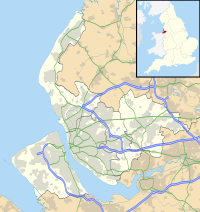
The West Derby Hundred is one of the six subdivisions of the historic county of Lancashire, in northern England. Its name alludes to its judicial centre being the township of West Derby.

Woolton is a suburb of Liverpool, England. It is an area located southeast of the city and bordered by Allerton, Gateacre, Halewood, and Hunt's Cross. At the 2011 Census, the population was 12,921.

All Saints' Church, is in Childwall, Liverpool, England. It is recorded in the National Heritage List for England as a designated Grade I listed building, and is the only medieval church remaining in the Metropolitan borough of Liverpool. It is an active Anglican parish church in the diocese of Liverpool, the archdeaconry of Liverpool and the deanery of Liverpool South – Childwall.

Woolton Hall is a former country house located in Woolton, a suburb of Liverpool, England. Built in 1704 and extensively renovated in 1772 by the influential architect Robert Adam, the building is praised as the finest example of Adam's work in the North of England. Throughout its first 200 years, the building was the residence of a number of notable figures, including the Earl of Sefton and Liverpool shipowner Frederick Richards Leyland.

St Peter's Church is in Church Road, Woolton, Liverpool, Merseyside, England. It is an active Anglican parish church in the deanery of Liverpool South Childwall, the archdeaconry of Liverpool, and the diocese of Liverpool. The church is recorded in the National Heritage List for England as a designated Grade II* listed building. It is one of the largest parish churches in Liverpool, and its bell tower stands at the highest point of the city. The church also has connections with The Beatles.

Liverpool Wavertree is a borough constituency of the Parliament of the United Kingdom. It was created in 1997 and every election since has been won by a Labour Party candidate.

Belle Vale is a district of south-east Liverpool, Merseyside, England and a Liverpool City Council Ward that covers both Belle Vale and Netherley.

Gateacre is a suburb of Liverpool, England, located approximately 6 miles (9.7 km) south of the city centre. It is bordered by the suburbs of Belle Vale, Childwall, and Woolton. The area is noted for its Tudor Revival architecture and contains over 100 listed buildings within a quarter-mile of its centre, making it one of the most important historic areas in the city.
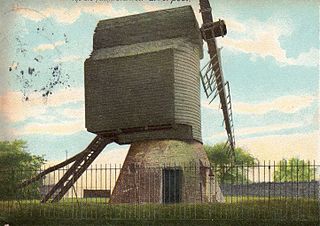
Wavertree Mill was a fifteenth-century windmill which stood in Wavertree, Liverpool, England. As a post mill, the wooden superstructure could be rotated on its base to catch the wind, by means of a projecting pole attached to a cartwheel.

Woolton ward was an electoral division of Liverpool City Council between 1953 and 1973, and 1980 and 2023. It and was centred on the Woolton district of Liverpool.
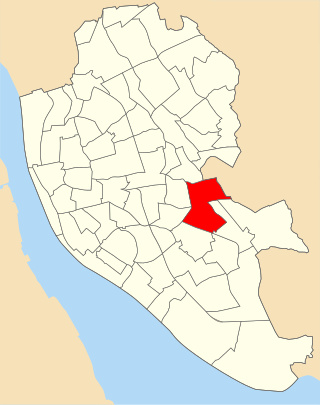
Childwall ward is an electoral district of Liverpool City Council within the Liverpool Wavertree and Garston and Halewood Parliamentary constituencies.

Scarisbrick Hall School is a mixed private school, located in Scarisbrick Hall, Lancashire, England, that educates children from nursery to age 18.
Bartholomew Booth (c.1732–1786) was a pioneer in American education. Oxford-educated, Booth was ordained as a priest in the Church of England before becoming a headmaster. He opened academies in Liverpool, then in Lancashire and Essex. He offered a wide curriculum, broadly following the educational philosophy of Benjamin Franklin, and was a curate for what became the congregation of Saint John's Church.
The archdeacons in the Diocese of Liverpool are senior ecclesiastical officers in the Church of England in a highly irregular area surrounding the city of Liverpool. They are the archdeacons of Liverpool, of St Helens and Warrington, of Knowsley and Sefton, and of Wigan and West Lancashire; each one has responsibility over a geographical area within the diocese. The archdeacons are responsible for the disciplinary supervision of the clergy within their archdeaconries.

St Mary's Church is in Church Road, Woolton, Liverpool, Merseyside, England. It is an active Roman Catholic parish church in the Liverpool South Deanery of the Archdiocese of Liverpool. The church is recorded in the National Heritage List for England as a designated Grade II listed building.

Our Lady of the Annunciation Church is a Catholic parish church next to Bishop Eton Monastery in Childwall, Liverpool. It was built from 1857 to 1858 by the Redemptorists and was designed by E. W. Pugin. It is on the Woolton Road, opposite the Hope Park campus of Liverpool Hope University and close to Our Lady's Bishop Eton Primary School. It is a Grade II* listed building.

Oglet is a small area of Liverpool, England, and the city's most southernly point. The area is entirely rural and virtually unpopulated, save for a couple of farms. For most of its known history, Oglet was classed as a hamlet in the township of Speke. Nowadays however, "Oglet" or "The Oglet" is typically used in reference to the entire area of land located sandwiched between Liverpool John Lennon Airport in Speke to the north and the River Mersey in all other directions, except for a short land border with Hale to its east.
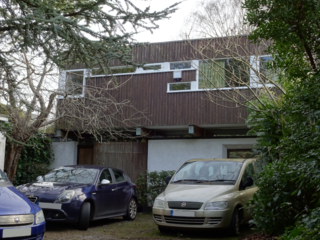
Cedarwood is a Grade II* listed house on Beaconsfield Road in Woolton, Liverpool, United Kingdom. It is most famous for being Woman's Journal's House of the Year for 1960. Designed by Beech and Prys Thomas, its "outstanding design, excellent detailing and remarkable preservation" led to it becoming a listed building by Historic England in 2007.
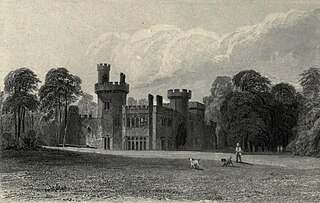
Childwall Hall was a 19th-century English country house located in Childwall, Liverpool, England. Built on the site of a previous mansion of the same name the Gothic Revival building was the seat of parliamentarian Bamber Gascoyne, a noted opponent of the abolition of slavery. The main building was demolished in 1949 and the current site is now occupied by a television production company Lime Pictures. A lodge building and a few ruins of the same style are all that remain of the hall.

